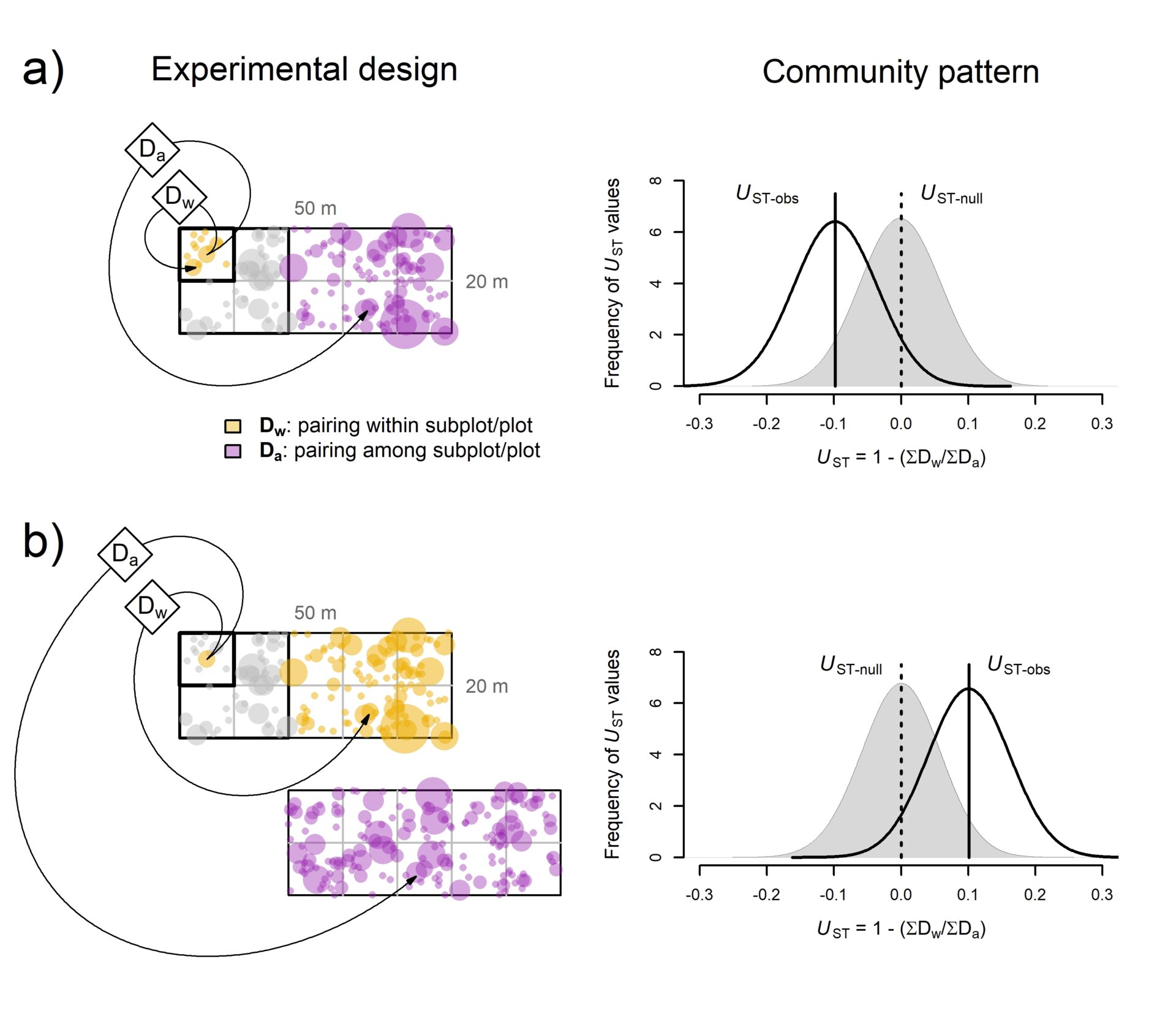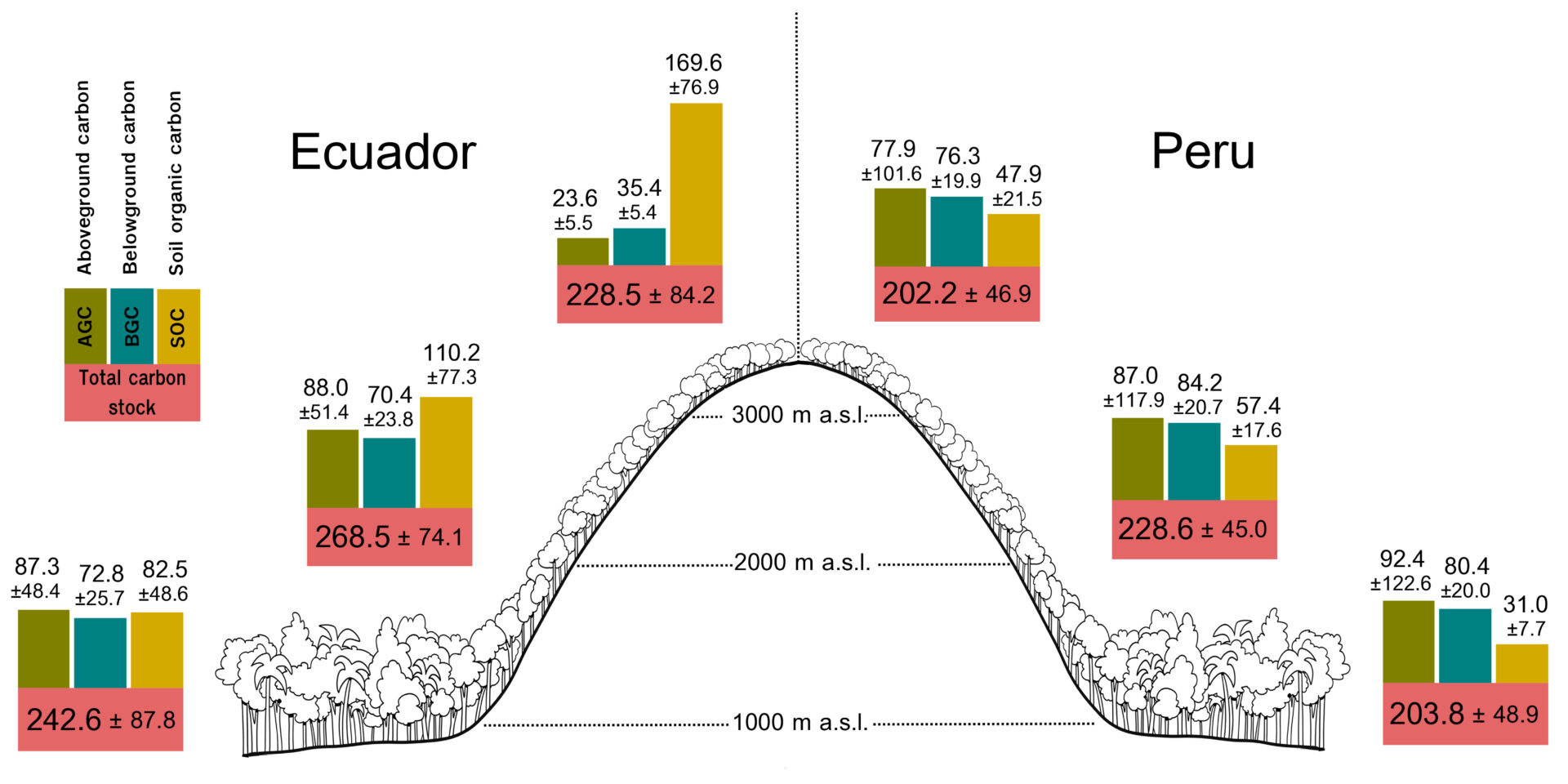Tropical forests are among the most important global carbon sinks and hence their capacity to…

New research article published in Ecology
Understanding the evolutionary and/or ecological mechanisms (including biotic, abiotic and stochastic factors) determining community assembly –i.e., the composition and distribution of biological communities on an ecosystem– remains a central theme in ecology. Beyond the classical taxonomic scope, functional approach has certainly improved our knowledge about the mechanisms generating biodiversity patterns within the last decades. However, many discrepancies still exist about which is the relative extent of those mechanisms and under which circumstances they exert their influence. In this sense, the existence of contradictory conclusions about what processes drive community assembly seem to be caused by different considerations related to the spatial scale at which communities are studied, embroiling the understanding of this topic. To incorporate this perspective, a hierarchical community assembly model has been proposed, which postulates that different community assembly mechanisms operate sequentially, at increasingly finer spatial scales, to render the observed biodiversity distribution patterns. This model comprises from evolutionary processes such as historical patterns of speciation, extinction or migration, that mostly act at large spatial scales, to abiotic and biotic processes, like environmental filtering or competitive exclusion, mainly performing at smaller scales.
In this work, published on July issue of the prestigious journal Ecology, we propose an approach based on several spatial scales to validate some of the hierarchical model posits and to clarify which assembly mechanisms drive species occurrence in biological communities. To do so, in this work we use tropical montane forests (TMFs) from The Andes as study system. Mountains provide an excellent natural lab to investigate how evolutive and ecological mechanisms shape community assembly along their slopes. The specific aim of this work was to test the posit claiming that environmental filtering and competitive exclusion operate at different spatial scales -large and small, respectively. For this aim, along two altitudinal gradients in protected areas from Ecuador (Podocarpus National Park) and Peru (Río Abiseo National Park), we investigated woody plants functional diversity patterns within plots -small scales- and across plots -large scales.

Our results showed that between plots located along the altitudinal gradient aroused a functional clustering pattern consistent with an ongoing environmental filtering process, while a functional overdipersion pattern consistent with a competitive exclusion mechanism was not revealed within plots. In addition, to validate the existence of an environmental filtering process beyond the functional pattern, we investigated whether the abundances of the most common species from the lower and upper parts varied along the altitudinal gradient as consequence of species climatic preferences resulting from environmental filtering influence. Lastly, we also explored whether those climatic preferences were maintained across the Neotropics. Results indicated that the abundances of the species typical from lower parts decreased as altitude increases whereas those from the upper parts species decreased as altitude decreases and that such patterns are consistent across the Neotropics.
This study reveals the importance of environmental filtering as an assembly process for woody plants communities in tropical montane forests without the need of conducting experimental manipulations to assess species’ ability to establish and persist in the absence of biotic interactions. Albeit that approach would be the most robust evidence of environmental filtering, this strategy is hardly feasible in locations so logistically challenging as tropical montane forests are and neither it would be so necessarily meaningful from an ecological point of view.
We invite you to read the full article in the Ecology journal website or through the Researchgate platform.
Bañares-de-Dios, G.; Macía, M. J.; Granzow-de la Cera, I.; Arnelas, I.; de Carvalho, G. M.; Espinosa, C. I.; Salinas, N.; Swenson, N. G.; Cayuela, L. (2020). Linking patterns and processes of tree community assembly across spatial scales in tropical montane forests. Ecology 101(7): e03058.


This Post Has 0 Comments